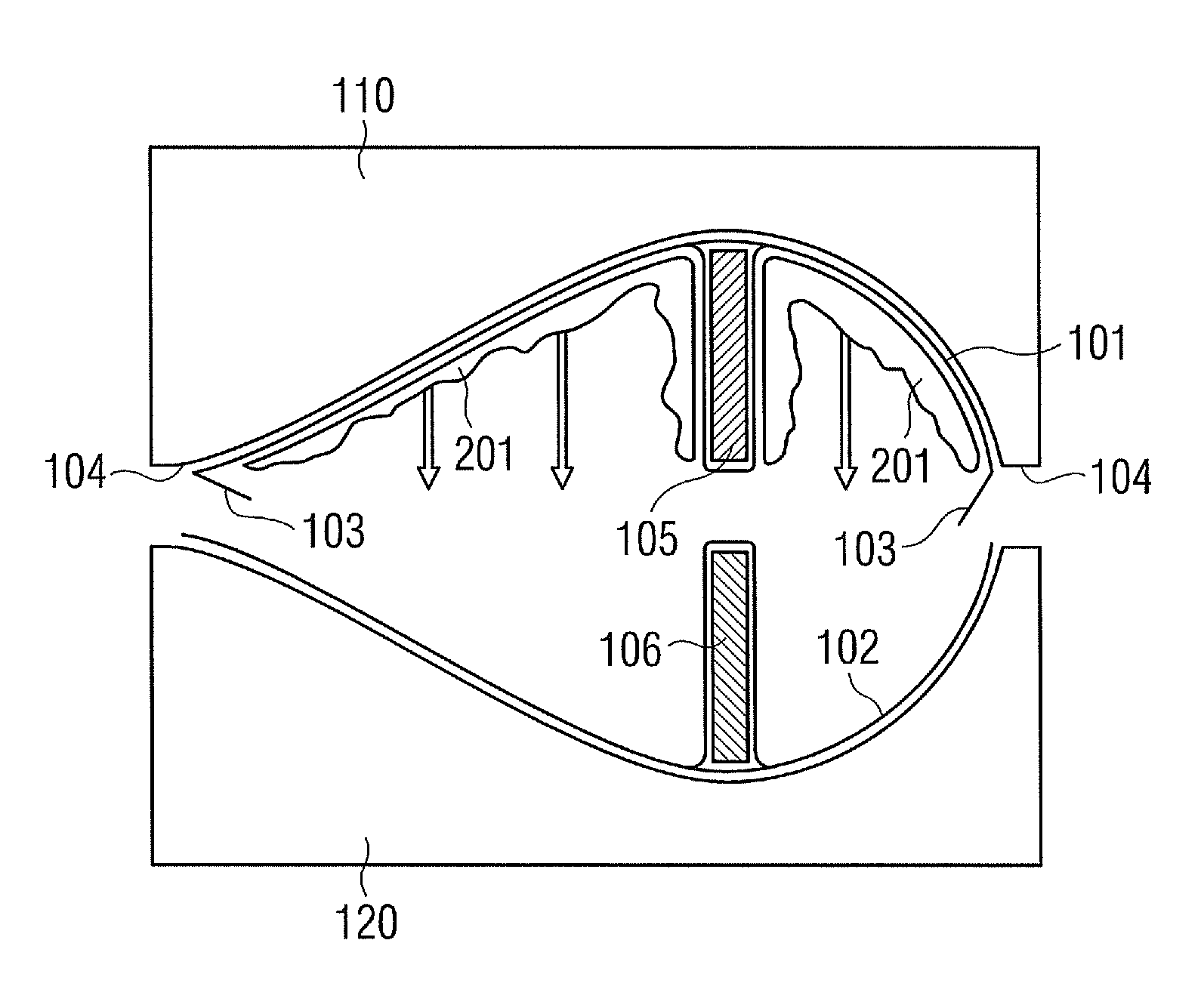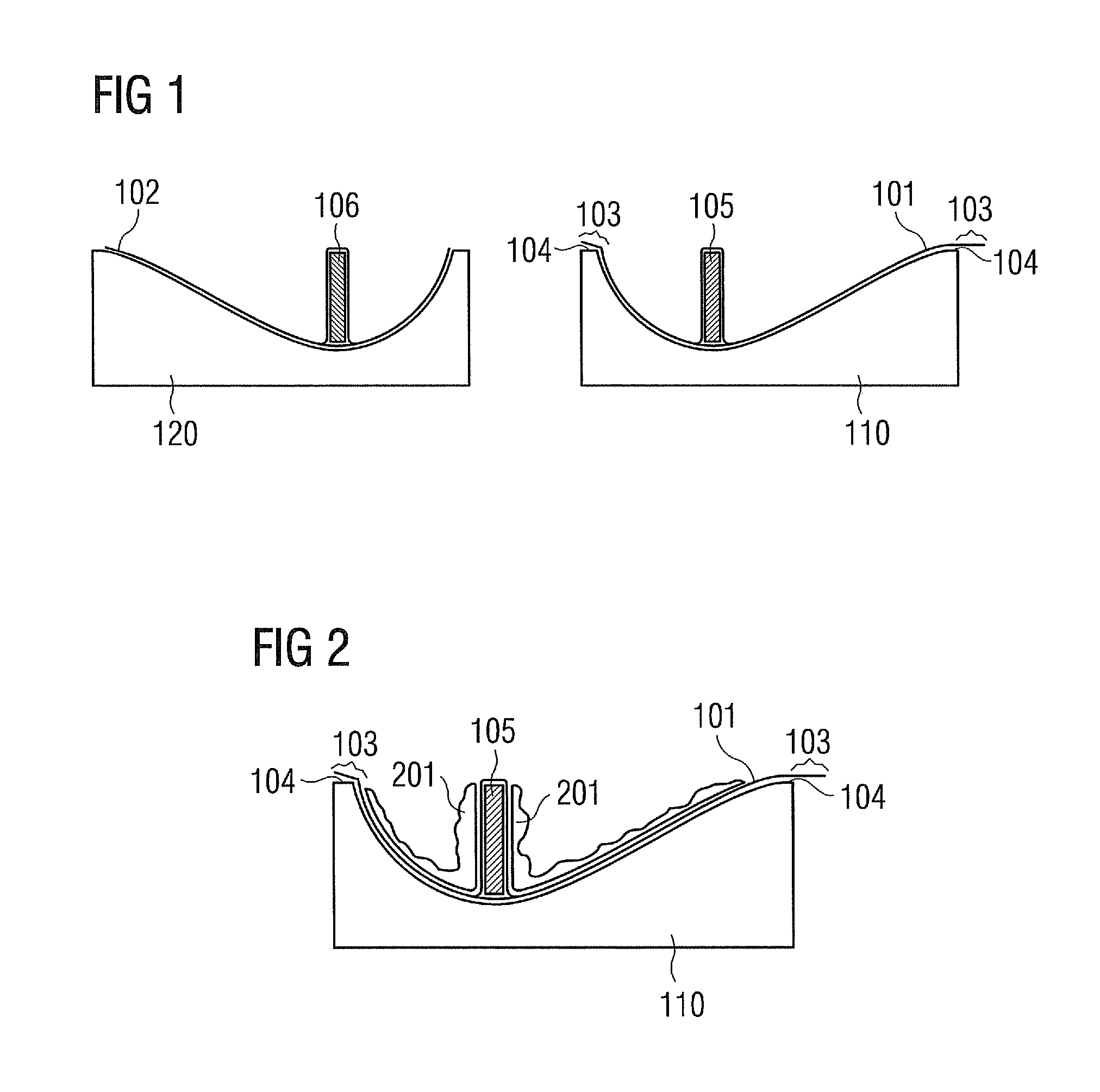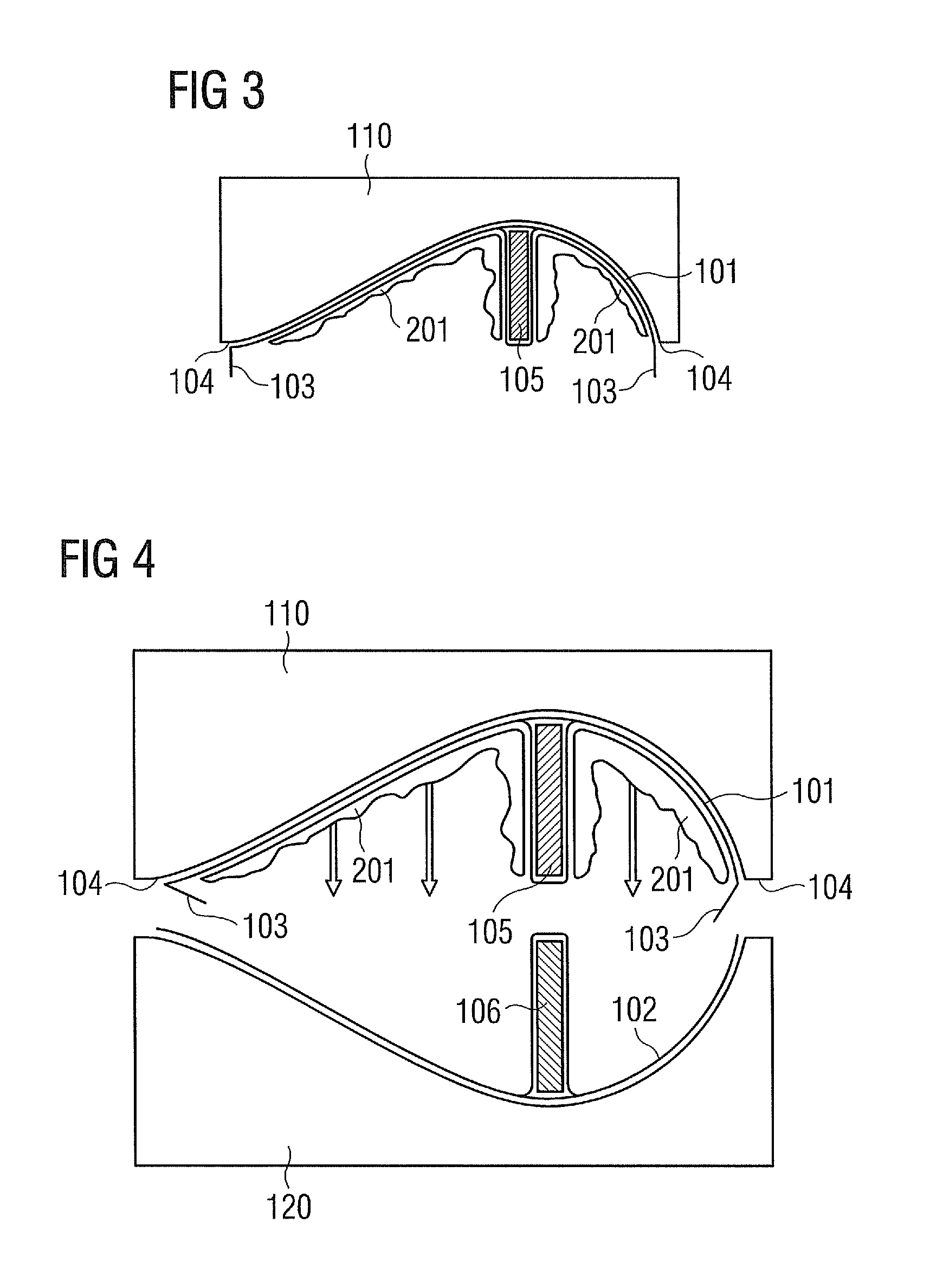Method for manufacturing a wind turbine rotor blade
a manufacturing method and technology for wind turbines, applied in the manufacture of final products, machines/engines, other domestic articles, etc., to achieve the effect of simplifying the manufacturing method of wind turbine blades
- Summary
- Abstract
- Description
- Claims
- Application Information
AI Technical Summary
Benefits of technology
Problems solved by technology
Method used
Image
Examples
Embodiment Construction
[0057]The illustrations in the drawings are schematical. It is noted that in different figures, similar or identical elements are provided with the same reference signs.
[0058]In FIG. 1 to FIG. 5, a method for forming a profile for manufacturing a hollow component made of composite fibre, in particular a hollow blade for a wind turbine, is shown.
[0059]FIG. 1 shows a first mould element 110 and a second mould element 120. To a first mould surface of the first mould element 110 a first composite fibre layer 101 is laid out. The first mould surface corresponds to a first profile section of the hollow component to be manufactured. For example, the hollow component is a blade of a wind turbine, so that the first profile section may form a (upper) half of the blade to be manufactured.
[0060]A second composite fibre layer 102 may be laid out onto a second mould surface of the second mould element 120, wherein the second mould surface corresponds to a second profile section of the hollow comp...
PUM
| Property | Measurement | Unit |
|---|---|---|
| gravity | aaaaa | aaaaa |
| size | aaaaa | aaaaa |
| flexible | aaaaa | aaaaa |
Abstract
Description
Claims
Application Information
 Login to View More
Login to View More - R&D
- Intellectual Property
- Life Sciences
- Materials
- Tech Scout
- Unparalleled Data Quality
- Higher Quality Content
- 60% Fewer Hallucinations
Browse by: Latest US Patents, China's latest patents, Technical Efficacy Thesaurus, Application Domain, Technology Topic, Popular Technical Reports.
© 2025 PatSnap. All rights reserved.Legal|Privacy policy|Modern Slavery Act Transparency Statement|Sitemap|About US| Contact US: help@patsnap.com



